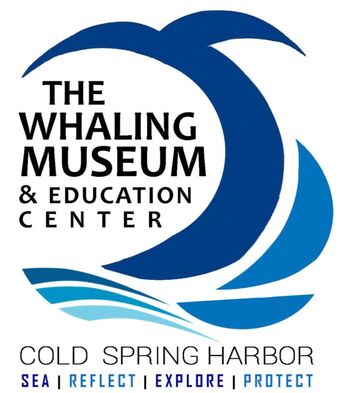-
WHALES
-
GENERAL WHALING
-
COLD SPRING HARBOR
-
COLD SPRING HARBOR WHALING
<
>
GENERAL WHALING INFORMATION
Video
This video is shown in the museum's gallery, but without the narration present in this video. From 1922 silent movie "Down to the Sea in Ships". Run time approximately 23 minutes. Produced by the Education Development Center with support from National Endowment of the Humanities.
This video is shown in the museum's gallery, but without the narration present in this video. From 1922 silent movie "Down to the Sea in Ships". Run time approximately 23 minutes. Produced by the Education Development Center with support from National Endowment of the Humanities.
COLD SPRING HARBOR
GEOLOGY & LAndscapeGlaciers carved out Cold Spring Harbor 18,000-20,000 years ago, leaving behind large boulders, hills, springs, and a five-mile harbor.
First purchaseIn 1653, the Matinecock sachem Asharoken agreed to sell land from Oyster Bay to Northport to a group of English settlers in an arrangement called the First Purchase. The document today resides in the Huntington Town archives.
The Jones FamilyTwo notable entrepreneurs were Water R. Jones and John H. Jones, great grandsons of Major Jones, who oversaw many business operations in town. One of their biggest notable ventures was launching the Cold Spring Whaling Company.
|
Indigenous peopleThe area was originally known as "Wawapex," or "at the good little water place." Cold Spring River was first known as nachaquetack, or Oyster River. The spring-fed stream located near current-day Spring Street just behind Main Street was once the site of a flourishing Matinecock village.
Unfortunately, little evidence of pre-European settlement survives today. Bone tools, arrowheads, and pottery shards have been found, some of which are in the museum's collection. Mill Town & Early TradesMills have an early history in Cold Spring Harbor, which were pivotal in helping the town grow economically. A gristmill and sawmill were built by a 1682 across the Cold Spring River. A woolen mill followed in 1700, with additional woolen mills later on, and a paper mill in 1782. The first school was built in 1790.
Local shipyards, brickyards, and blacksmith shops were born. Farms grew wheat, hay, corn, and other crops, and sheep pastured on fields. 500 residents lived in "downtown" Cold Spring Harbor by 1850. |
European settlers named the area after the abundance of freshwater springs.

